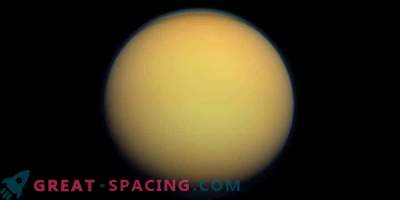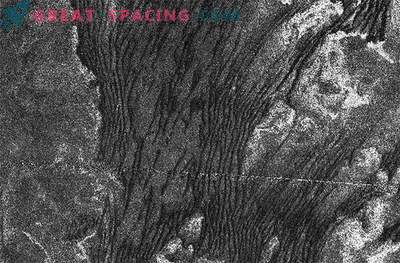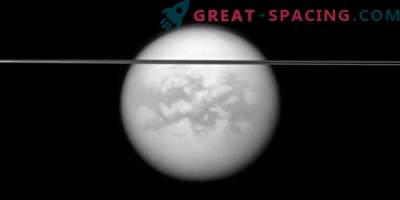
Saturn’s largest satellite is Titan behind the ring system. Epimetheus is visible in the foreground.
New research shows that the largest satellite in the family of Saturn has powerful showers. Storms are rare (once in 29.5 years), but are more common than scientists believed. In reality, extreme events were expected to repeat once every 1-3 millennia.
Storms cause massive flooding in generally desert areas. The surface of Titan copies the earth with flowing rivers, large lakes and seas. There are also thunderclouds bringing seasonal downpours. But here we are not faced with water, and liquid methane.
Models show that these showers are capable of responsible for the formation of an icy lunar surface, as the earth creates rocky. On our planet, intense storms can lead to heavy precipitation, forming a cone-shaped objects - alluvial fans. On Titan there are similar objects, but created by methane showers.
It is believed that this principle can be applied to Mars and other planetary bodies. Understanding the relationship of precipitation and surface layer can help to understand the changes in climatic conditions on Earth and other planets.

Titan Captured by Cassini
Alluvial gaps were noticed by the Cassini ship, which had begun to study Saturn since 2004. The mission ended in September 2017, when the unit went into a planetary atmosphere.
Scientists are faced with an absolutely new find, but they have been watching the lunar surface for a long time. Cassini Radar also reflected the dominance of giant sand dunes in the lower latitudes of the satellite, and in the high seas, lakes and seas are more common. Alluvial fans are between 50 and 80 degrees in latitude.
All this suggests that Titan has regional differences in precipitation. Early models showed that liquid methane is concentrated at higher latitudes. But no one had previously dealt with a detailed review of the behavior of extreme showers, which could lead to the transfer of precipitation and erosion.
Researchers had to rely on computer models, as it is difficult to track the process of precipitation for the entire orbital path of Saturn. Mostly rain accumulates closer to the poles, where there are seas and lakes, and the most intense rainfall falls at 60 degrees in latitude (the point where alluvial fans are concentrated).











































